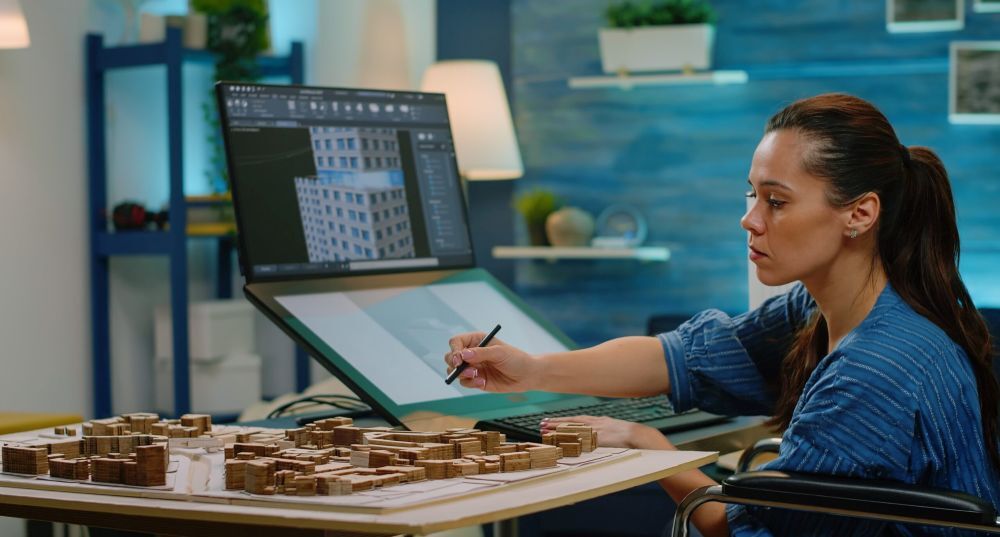
With cities growing and more people living in them, it is now more important than ever to plan cities in a sustainable and intelligent way. What does an urban planner do, and why is their job increasingly important nowadays?
The U.S. Bureau of Labor Statistics (BLS) predicts that employment for urban and regional planners will increase by 4% from 2021 to 2031, which is the same as the average for all occupations. Every year, it is estimated that 3,800 new jobs for planners will be created due to population growth, more people moving to cities, and greater attention to the environment.
The Smart Cities Mission and similar programs are helping urban planning to grow by focusing on infrastructure, public housing, and transport. Planners are being hired by both the government and private companies to help with land-use planning, zoning, and community development. Certified urban planners are now needed more than ever, as the urban planner job description is no longer a specialty; it’s a necessity.
What Is an Urban Planner?

An urban planner is a professional responsible for developing plans and programs that determine how land in urban, suburban, and rural areas will be used. They work to create communities that are functional, sustainable, and aesthetically pleasing.
Urban planners collaborate with government officials, architects, engineers, developers, and community members to shape the long-term layout and structure of cities and towns. Whether it’s deciding where to build roads, parks, or housing, their focus is to balance the needs of people, the environment, and the economy.
So, when people ask, “What is an urban planner?”, the answer lies in their unique ability to turn data and design principles into real-world solutions that improve the quality of life for residents.
What Does an Urban Planner Do?

Now, let’s dive deeper into what an urban planner does daily. Urban planning is both a creative and analytical field, involving a wide array of responsibilities that directly impact how cities function.
Here’s a look at the typical urban planner job description:
1. Land-Use and Zoning Analysis
Urban planners assess land to determine the best uses for different areas, whether that’s residential, commercial, industrial, or recreational. They must understand zoning laws and environmental regulations and apply that knowledge to create balanced, sustainable development plans.
2. Long-Term Urban Development Planning
Planners often work on long-term projects that may take decades to implement. These include master plans for cities, regional development strategies, and revitalization plans for declining neighborhoods.
3. Stakeholder and Community Engagement
Public input is a crucial aspect of urban planning. Planners organize community meetings, conduct surveys, and consult with residents to gather feedback on planning initiatives. These consultations ensure that development is inclusive and meets the needs of the local population.
4. Environmental and Transportation Planning
Environmental sustainability and efficient transportation systems are key priorities. Urban planners work with environmental specialists and civil engineers to reduce pollution, protect natural resources, and promote public transport, bike lanes, and walkability.
5. Policy Research and Drafting
Urban planners research housing trends, economic factors, and demographic data to write effective urban policies. They might propose new land-use regulations, building codes, or incentives for green construction, and must often present these policies to public officials and community groups.
Whether you're reviewing an urban and regional planner job description or exploring opportunities in municipal governance or private consultancy, the day-to-day work is intellectually stimulating, multidisciplinary, and purpose-driven.
Also Know Urban Planner Salary Around the World!
Key Skills Required to Become an Urban Planner

To succeed in this role, you’ll need a combination of technical and soft skills. If you're wondering what skills do you need to be an urban planner, here's a breakdown that includes both analytical tools and human-centered competencies.
Technical Skills:
- GIS (Geographic Information Systems): Essential for spatial analysis and mapping. Tools like ArcGIS help planners interpret and visualize land-use data.
- Data Interpretation: Understanding statistical and demographic trends is vital to making evidence-based decisions.
- Zoning and Regulatory Knowledge: Familiarity with building codes, environmental laws, and zoning ordinances ensures legal and practical feasibility of plans.
- Urban Design Principles: A Basic understanding of architecture, infrastructure, and landscape design helps bridge the gap between concept and execution.
- BIM (Building Information Modeling): Tools like Revit Software and Navisworks software are increasingly used to facilitate collaboration with architects and engineers during large-scale infrastructure or housing projects.
Soft Skills:
- Communication Skills: Urban planners must present complex ideas to non-experts, including city officials, developers, and the public.
- Critical Thinking: Strong analytical thinking helps planners consider long-term impacts, weigh trade-offs, and prioritize sustainable options.
- Negotiation and Mediation: Balancing the interests of multiple stakeholders, from government agencies to private developers, requires tact and diplomacy.
- Team Collaboration: Planners work in multidisciplinary teams. Being able to collaborate with engineers, architects, environmental scientists, and policymakers is key.
- Adaptability: Urban environments are dynamic, and regulations, funding, or public sentiment can shift. Planners must be flexible in response.
Together, these skills needed to be an urban planner form the backbone of a career that is both intellectually challenging and socially impactful.
Struggling to crack Urban Planner, read these most-asked interview questions with sample answers.
Most Used Software by Urban Planners

Urban planners today rely heavily on digital tools and software to analyze, model, and present their plans. Let’s explore the urban planner software tools that are most commonly used in the field:
1. Autodesk Revit
Revit is a BIM software that supports collaboration between planners, architects, and engineers. It’s particularly valuable for modeling buildings and public infrastructure with detailed spatial and structural data. Its integration with sustainability and lifecycle analysis tools makes it especially relevant in eco-conscious planning.
2. Navisworks
Navisworks is a project review software that supports 3D model aggregation, clash detection, and construction simulation. Urban planners use it to ensure coordination across disciplines during infrastructure planning. It helps anticipate problems before construction begins, reducing costly delays and redesigns.
3. ArcGIS
The gold standard in GIS, ArcGIS, is used for mapping spatial data, understanding geographic patterns, and modeling environmental impacts. It supports planners in evaluating land suitability, zoning conflicts, and future development potential.
4. AutoCAD
Urban planners use AutoCAD to draft 2D and 3D site layouts, utility plans, and infrastructure maps. It’s widely used for precision planning and is often integrated with BIM platforms.
5. SketchUp
SketchUp is favored for quick, intuitive 3D modeling of neighborhoods, parks, and streetscapes. It’s useful for visualizing proposed developments and presenting them in public meetings.
Also Explore - Top Software Courses for Urban Planners in USA
Conclusion
Urban planning is one of the most dynamic, interdisciplinary, and impactful professions of our time. If you’ve been asking, “What is an urban planner?” or “What does an urban planner do?”, the answer is that they shape the very environments we live, work, and play in. The urban planner pay varies depending on experience, location, and sector, but the demand for skilled professionals continues to rise, making this a stable and rewarding career choice.
Learning the BIM Professional Course for Civil Engineers by Novatr not only enhances your skill set but also opens the door to better roles and higher pay.
Visit our resource page to get started and receive expert guidance on advancing your career.
Was this content helpful to you



.jpg)






